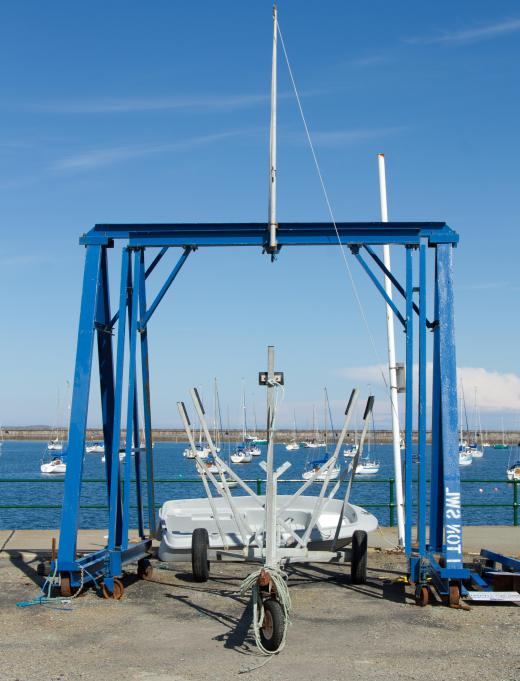It is often easier to choose the best winch design when a few important considerations are taken into account. The primary purpose, form of power and tension capabilities are often considered the most important aspects of winch design. Reliability, size and cost also can affect whether a winch is considered best for a particular job. Finding the best design often means balancing all of these factors.
The primary intended use of a winch often helps narrow down which winch design is best. Winches are helpful in many situations and on many different scales, including compact hand crank and larger industrial winch designs. Depending on the primary purpose of a winch, the size and supportable tension can change dramatically. It may be important to choose the winch design most obviously suited to the task at hand.

When choosing the best winch, it also is important to consider the power source controlling the winch. Simple, hand-powered winches may be fine for personal use, but pneumatic winches may be more appropriate for light industry applications. Winches can be powered by electricity, internal combustion engines, pneumatics, hydraulics and manual effort. The best winches will be powered appropriately for the task being performed without straining to work or being too powerful.
Whether the winch can maintain tension also can determine the best design. Some winches, for instance, may not be designed to hold tension for long periods of time. Others might have multiple safeguards meant to work even in high-tension situations. Determining tension requirements is often considered an important step before endorsing any winch design.
Along similar lines, whether a winch design is proven to be reliable also can alter which is best. Many winches perform important tasks, such as those used to lower and lift ship anchors. If one of these winches should break at the wrong time, it could be dangerous or even life-threatening. As a result, the best winch design will often be considered reliable by qualified experts. Looking for reputable brands considered the best in trade or consumer publications also can help when determining which winch is best.
Cost is another important factor when determining the best winch design. For instance, a cheap winch may be appropriate when it is only to be used for a short time, while a more expensive and reliable winch may be more appropriate for long-term use. Generally, it is helpful to look for winches that are cost-effective without sacrificing quality.
